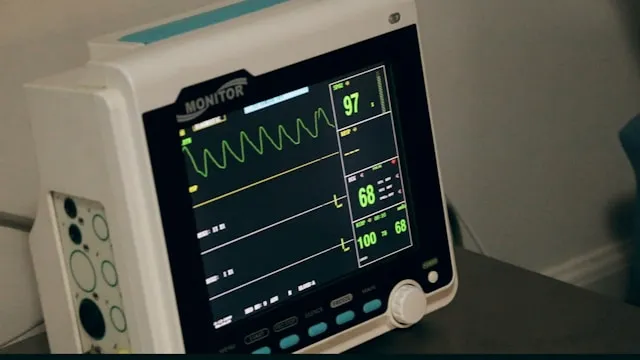What is CABG Surgery?
It is a kind of procedure that is used in the treatment of coronary artery disease (CAD). This disease is caused due to the thinning of coronary arteries, which are the blood vessels that help in the supply of blood and various other nutrients to your heart.
The thinning of the arteries is caused due to the accumulation of fat also called plaque inside the walls of the arteries. This fat hardens over time and may lead to a rupture. When the plaque hardens it causes the arteries to become narrow, which obstructs the oxygen-rich blood flow to the heart. As a result, you experience severe chest pain, which is termed as angina.
Rupturing of the plaque can lead to the formation of a blood clot, if the blood clot is large in size it can completely stop the flow of blood to the heart. This leads to a chest pain followed by a heart attack. If the extent of the heart attack is severe it can lead to various complications and even death.
Why is CABG Surgery performed?
According to an experienced Cardiac Surgeon in Mumbai,
CAD has alternative treatments like controlled diet, changes in one's lifestyle, medicines and a specific revascularization process, which is called coronary angioplasty. But CABG is performed if severe blockages are found in the large coronary arteries that help in the major supply of blood to the muscles of the heart. If blood and nutrients do not reach the heart, it weakens and the pumping rate of the heart becomes slow and tedious.
The CABG surgery is also performed when the angioplasty treatment has no effect on the arteries and the heart. Angioplasty is a non-surgical treatment, which uses a stent to widen the arteries and restore the blood flow to the heart. A stent is a tiny mesh tube that provides the necessary support to the walls of the coronary artery. When this procedure does not work CABG is the next option.
Who performs CABG Surgery?
In case you experience severe chest pain for a prolonged period of time, it is recommended that you visit your doctor. Your doctor will recommend the next step in reference to your reports. If you are susceptible to a heart attack or have already been the victim of one, your doctor may recommend you to an experienced cardiothoracic surgeon.
The coronary artery bypass graft surgery is performed in the Cardiac Surgery Intensive Care Unit.
Read about 5 Questions to ask your Cardiac Surgeon before CABGHow long does CABG Surgery take?
The time taken for the surgery depends on the number of arteries that need to be bypassed. Usually, it takes about 3 to 5 hours for a standard coronary artery bypass grafting procedure.
A patient needs to stay at least 5 to 7 days in the hospital and the full recovery time period after the surgery is about 3 months. After the surgery is conducted a patient is put up in the Intensive Care Unit (ICU) for at least one or two days, where his condition is checked at regular intervals by a team of capable doctors and nurses. In the ICU a temporary pacemaker is installed. A pacemaker is a device, which is located in the chest or abdomen to measure and control abnormal heart activity. The pacemaker is removed when the patient is shifted to the general ward.
Read a detailed article on Recovery After CABG.What are the various types of CABG Surgery?
Ideally, there are three kinds of coronary artery bypass grafting. Your cardiologist will recommend any one in accordance to your health requirements.
Traditional Coronary Artery Bypass Grafting
The traditional procedure of coronary artery bypass grafting is performed when one or more of the coronary arteries are in need for a bypass. The surgery involves the opening of the chest to operate on the heart.
In this procedure, the patient is given medicines to stall the working of the heart. A heart-lung bypass apparatus is attached to the patient to continue the pumping of oxygenated blood in the entire body. The machine allows the surgeons to work on a non-functional heart.
After the surgery is done, the blood circulation is effectively restored and the heart begins pumping blood by itself again. Sometimes, slight electric shocks are given to the patient to recommence the pumping of the heart.
Off-Pump Coronary Artery Bypass Grafting
This kind of CABG procedure also requires the chest to be cut opened to gain access to the heart. The only difference is that the heart is not stopped and the heart-lung bypass apparatus is not put to use in the off-pump CABG procedure. This procedure is also called the beating heart bypass grafting.
Minimally Invasive Direct Coronary Artery Bypass Grafting
This kind of CABG surgery is a class apart, as it does not involve cutting open the chest at all. In this procedure, many tiny cuts are placed in the left-hand area of the chest, in the middle of the ribs. It is usually used when the front side of the heart needs to be operated upon. This procedure is fairly new, and is not ideal for all patients, especially when two or more arteries required to be operated on.
How to prepare for CABG Surgery?
To understand if you need CABG your general practitioner will first conduct a thorough physical examination, followed by certain tests to locate the arteries that are clogged, to what extent and if there is any damage to the heart.
Ideally, various tests like EKG (Electrocardiogram), Echocardiography, Stress Test and Coronary Angiography and Cardiac Catheterization are performed.
- EKG or Electrocardiogram is a test that is done, to sense and record the electrical activity of the heart. It records the rhythm of the heart and the pace at which it beats.
- Echocardiography is a test in which sound waves are used to make a moving depiction of the heart. It shows the structure of the heart and its size. You can also see the different chambers and also the valves of the heart. It effectively shows those areas that are affected by irregular blood flow. The test is usefully done prior to and subsequent to a stress test.
- A Stress Test is conducted to make your heart beat at a faster rate. A patient is usually made to exercise or given medicines to increase the rate of the heart.
- Coronary Angiography and Cardiac Catheterization use dye and a special kind of x-ray to illustrate the inner walls of the coronary arteries. Angiography aids your surgeon to locate blockages in the heart that may lead to a heart attack.
Cardiac Catheterization is a procedure through which the doctor applies the dye into your arteries. Both Coronary Angiography and Cardiac Catheterization go hand in hand.
All these tests are performed in preparation for CABG. You will be advised about your diet before the surgery and informed about the medicines that you have to take.
What are the possible risks of CABG Surgery?
As per a renowned Cardiologist in Paras Hospital Gurgaon,All surgeries have certain risks, CABG is comparatively safe but there are some risks involved like infection and bleeding of the wound, reactions to anaesthesia, fever and severe pain after surgery. Severe cases can lead to a stroke, heart attack and even death.
Sometimes after the surgery, inflammation of the lung and the heart sac may lead to fever followed by pain in the chest and loss of appetite. This may take place immediately after the surgery extended to a period of 6 weeks.
In a case of traditional CABG, the patient can have memory loss because of the use of the heart-lung bypass machine. These side effects are more common in older people who go through the surgery. The machine can also lead to clotting of blood in the blood vessels, which can obstruct the movement of blood to the brain or other parts of the body.
Generally, risks are considerably reduced, if the CABG surgery is planned well in advance. It is only in emergency situations that the procedure may lead to harmful side effects, especially is aged patients.
What is the cost of CABG?
Generally, the cost of CABG surgery differs from country to country. For example, the overall cost of this surgery is 82.5% higher in the United States of America in comparison to Canada. This is because direct and overhead costs in the hospitals of U.S are more in comparison to the hospitals of Canada.
In India, the total costs of a CABG surgery range from INR 2.25 lac to 3 lac. Your insurance company depending on your insurance policy and plan can cover these costs.
Get estimated Cost of CABG in India from trusted hospitals, FREE.
What are the alternative names of Coronary Artery Bypass Grafting (CABG)?
Commonly CABG is also called the Bypass Surgery and Open heart surgery. Call +91-8010-994-994 and talk to Credi Medical Experts for FREE. Get assistance in choosing the right specialist, compare treatment cost from various hospitals and get support in managing other hospital processes.

Reviewed by







